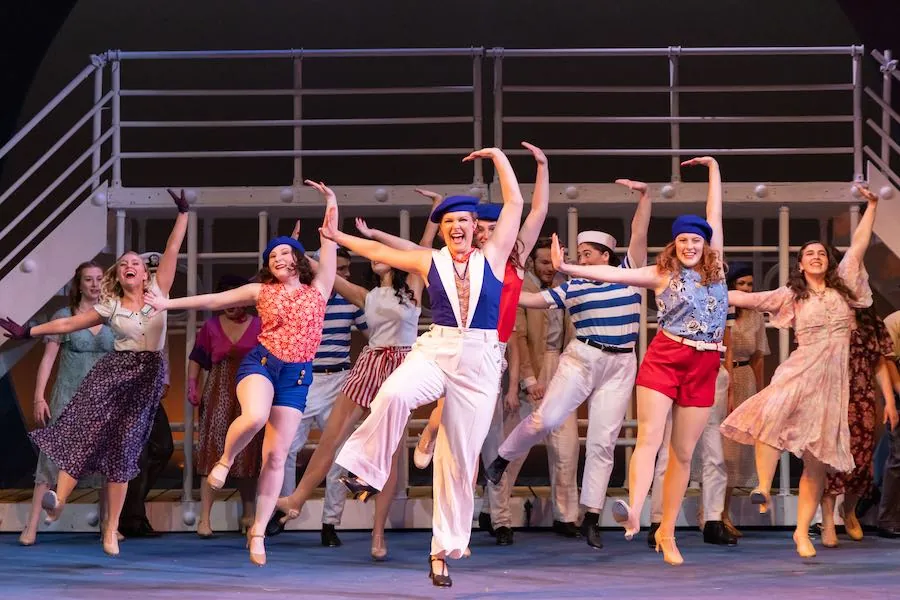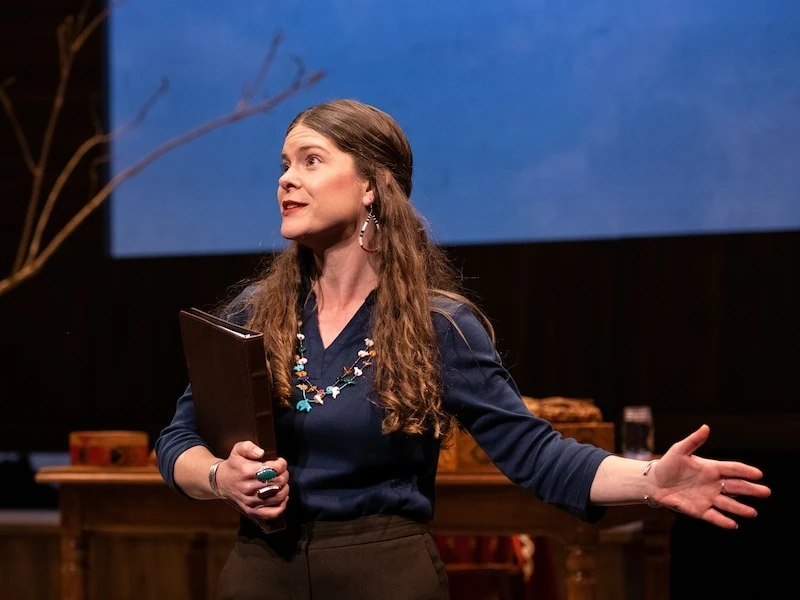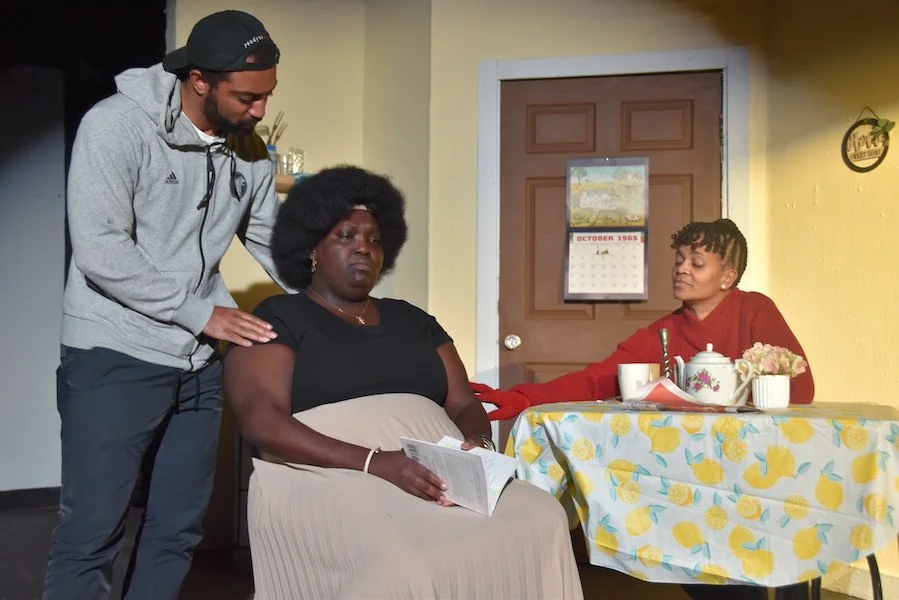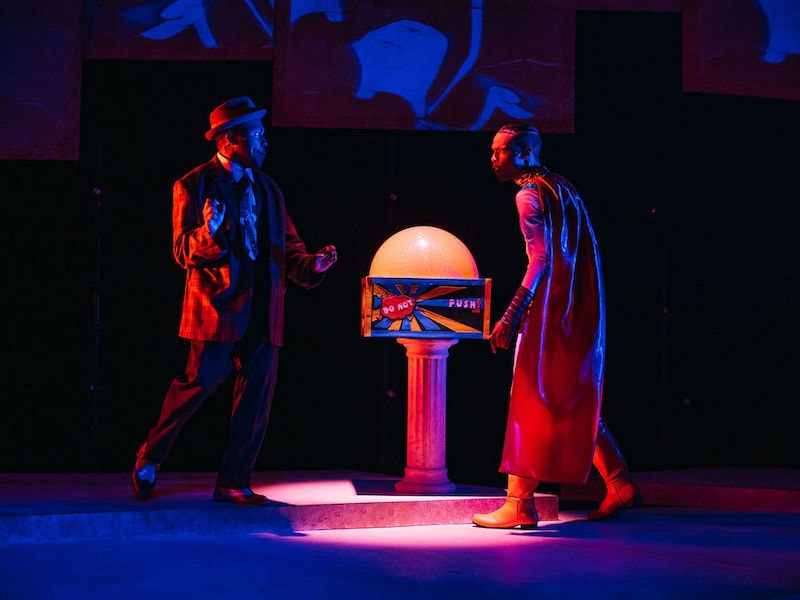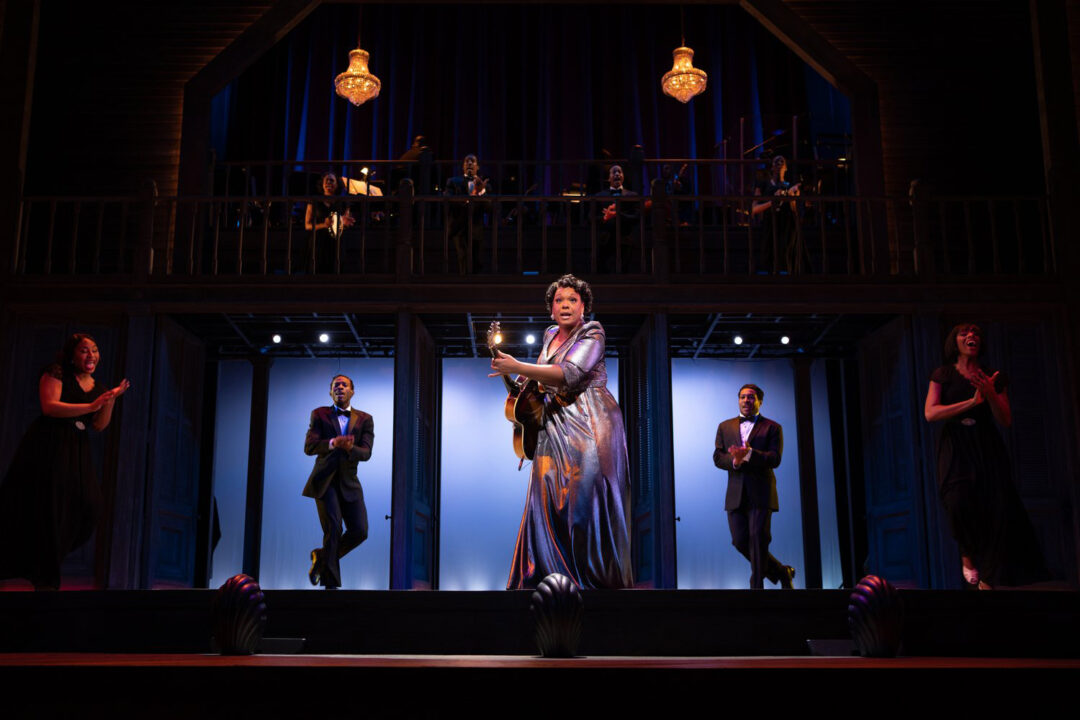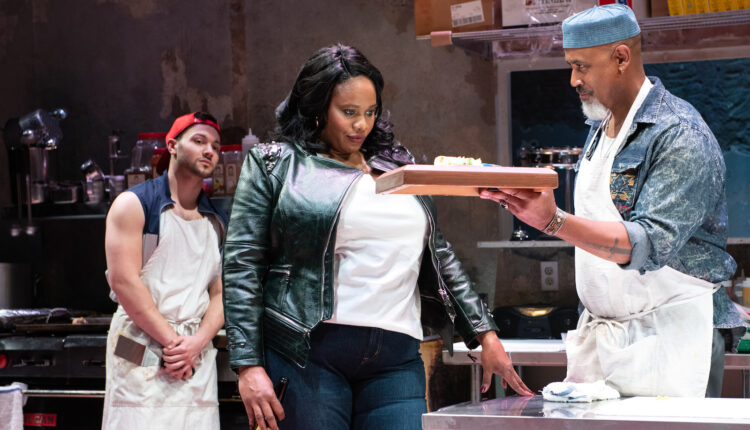By Jakob Cansler
This article was originally published in DC Theater Arts here.
It has been said that Anything Goes lives and dies by its Reno Sweeney.
She is not technically the musical’s main character, nor is her romance the central plotline, but she is its star, the center around which everything else orbits. There is a reason that, over the course of the show’s nearly 90-year history, virtually every review of major productions leads with Reno — if the actress in that role is worth seeing, the show likely is as well.
Catholic University, then, is lucky to have Emma Mangiacotti in the role for its production of Cole Porter’s 1934 classic, now performing at the Hartke Theater until April 23. At its best, Catholic University’s Anything Goes is captivating, largely because it plays to its strengths, including, yes, its Reno.
Set on the London-bound SS America, Anything Goes is built around a number of romantic, comedic, and romantic-comedic plotlines. At the center of the conflict is Billy Crocker (Ethan Turbyfill), a young Wall Street broker who is supposed to be selling stocks for his boss but instead sneaks onto the ship to follow Hope Harcourt (Brooke Daigle), with whom he fell in love after spending one night together, much to the chagrin of Reno, who loves Billy herself.
Also onboard is Hope’s wealthy English fiancé Lord Evelyn Oakleigh (Patrick Payne), Hope’s mother (Alexis Griess), Public Enemy #13 Moonface Martin (Jimmy Bartlebaugh), and a whole slew of other kookie characters. Chaos, of course, ensues.
If the script seems messy, that’s because it is. No fewer than six people are credited with writing the book — for the original script: P.G. Woodhouse, Guy Bolton, Howard Lindsay, and Russel Crouse; for the revised script: Timothy Crouse and John Weidman. It wouldn’t be unfair to say that, as funny as it may be, the plot of Anything Goes is largely a vessel for a plethora of Cole Porter classics.
The glue holding it all together, of course, is Reno. On a ship full of zany characters, she is seemingly the only one that is normal — a calm, cool, and confident presence. In order for Anything Goes to work on an artistic level, Reno needs to have an almost inhuman level of effortless charm and swagger, captivating the audience’s attention anytime she is onstage.
That assignment, it appears, has been understood by Mangiacotti. As Reno, she embodies a level of coolness that is magnetic, helped along by a set of chic period pieces (costume design by Ashlynne Ludwig) that make the other character’s garb seem drab.
Mangiacotti also has the singing and dancing chops to carry many of the musical’s best songs, which is good news, considering that of the six or so famous numbers in Anything Goes, Reno leads five.
The show-stopping title track is indeed show-stopping — especially in front of J.D. Madsen’s simplistic yet striking set — as is the crowd-pleasing “Blow, Gabriel, Blow,” both featuring impressive, if indebted heavily to the show’s 2011 Broadway revival, choreography by Kimberly Schafer. For both, an orchestra that somehow features only seven musicians brings a pack of energy.
“Friendship,” a number much more comedic than enthralling, also stood out, largely because of Bartlebaugh’s performance as Moonface. Both in that number and throughout the rest of the show, he displayed a particular knack for comedic timing and physical comedy. His partner in crime, Carolyn Tachoir as Erma, has the same skill, even as that character doesn’t get nearly the same spotlight.
Still, Bartlebaugh and Tachoir’s ability to toe the line between caricature and character also stood out because some other actors struggled to do the same. Some went overboard with comedy, making the jokes too obvious, while others didn’t quite go far enough, leaving potentially hilarious lines untapped of their energy. (It certainly didn’t help that microphone issues meant that the sound of breathing distracted from the dialogue in many scenes.)
Luckily, though, Director Jay D. Brock seems to know how to play the cards he’s dealt, and in the case of this production brings the cast’s strengths to the forefront. In this case, that would be the musical performances, especially by Mangiacotti and Turbyfill’s Billy, and the aforementioned comedy duo of Bartlebaugh and Tachoir.
That’s a smart move on Brock’s part and is particularly fitting for a musical like this one, which is, at its best, spellbinding enough for its weaknesses to become forgettable. As a result, even with those weaknesses, Catholic University’s Anything Goes makes for a commendable night of entertainment.

